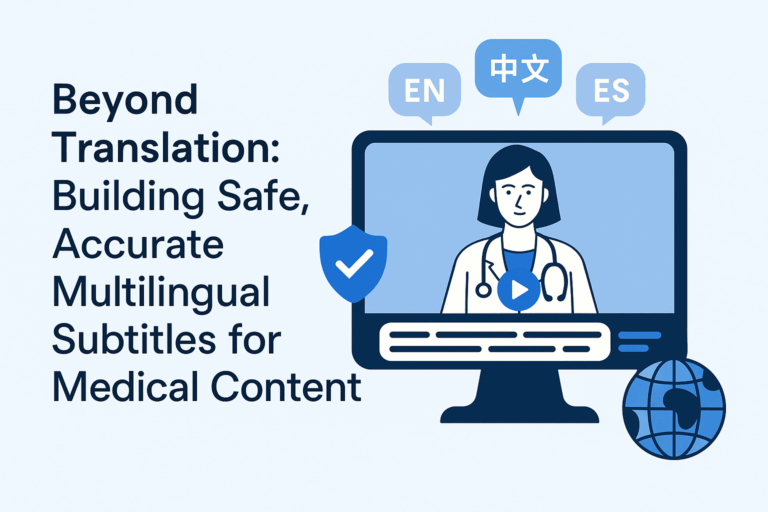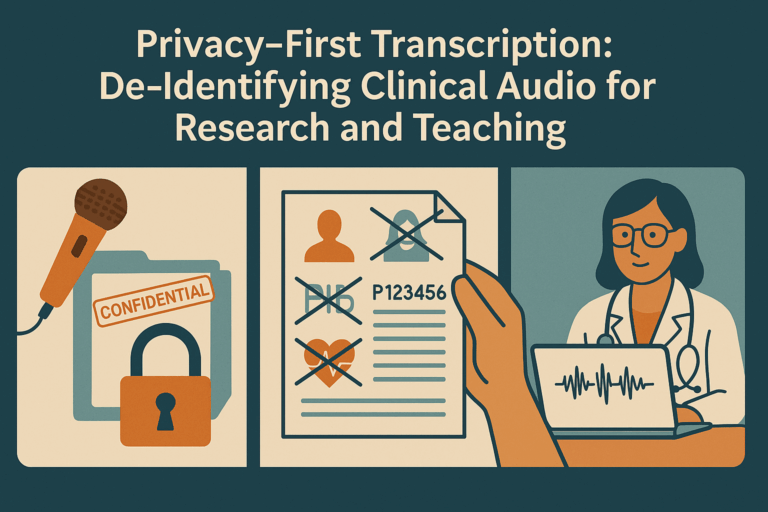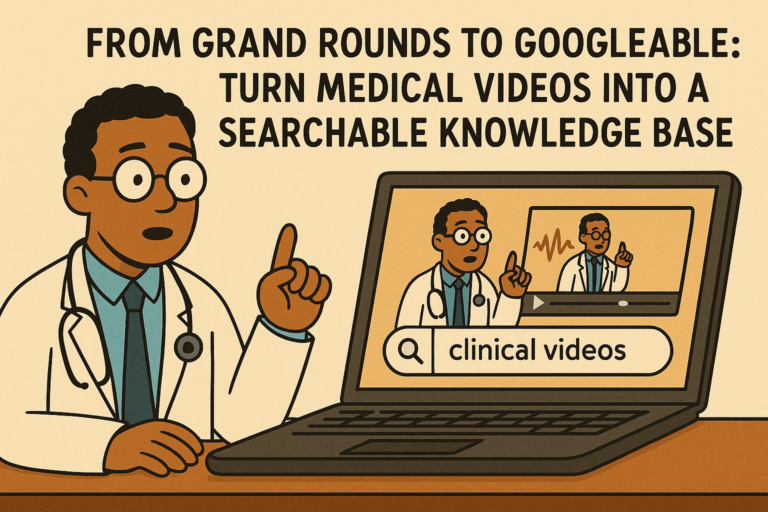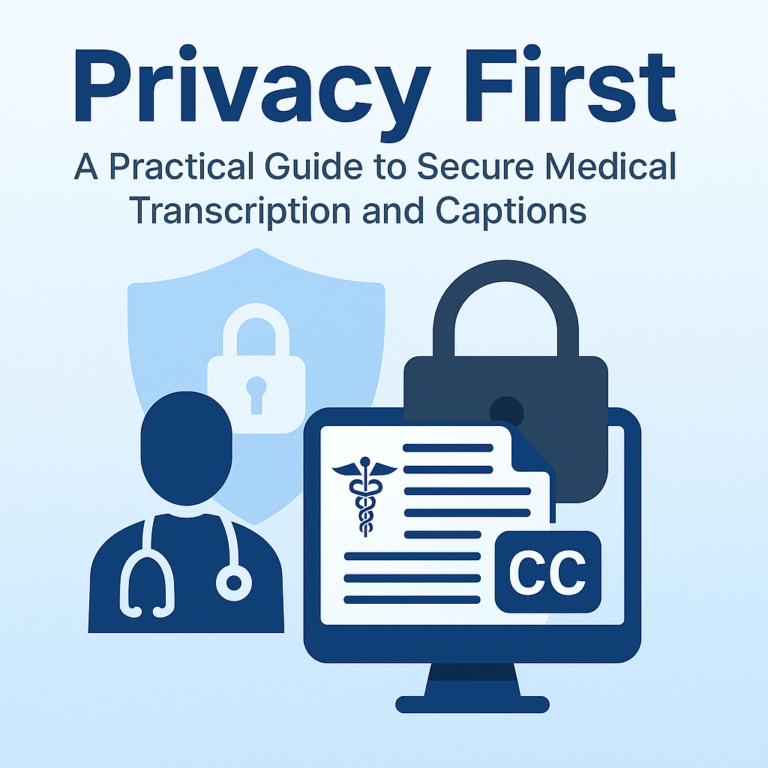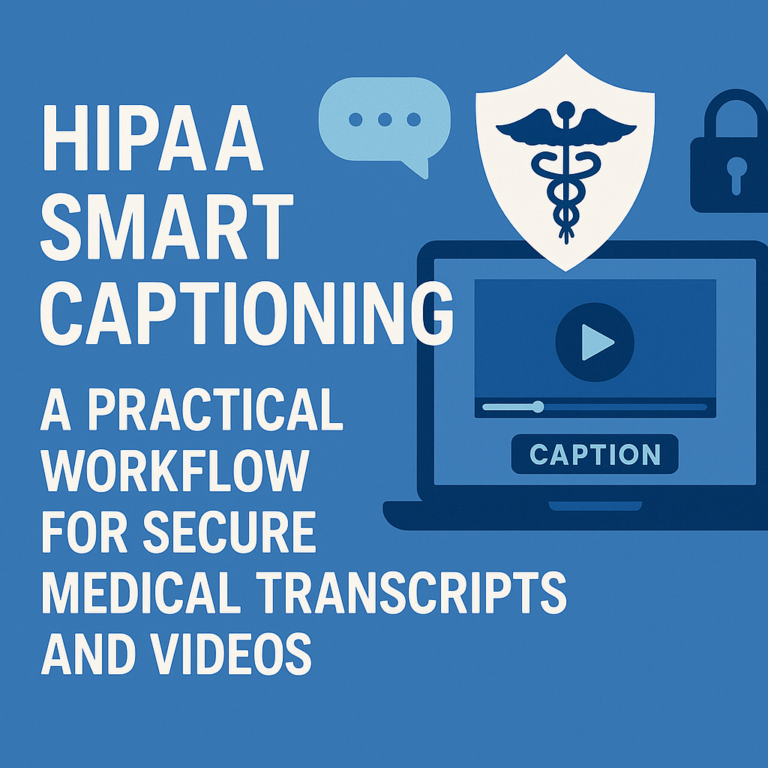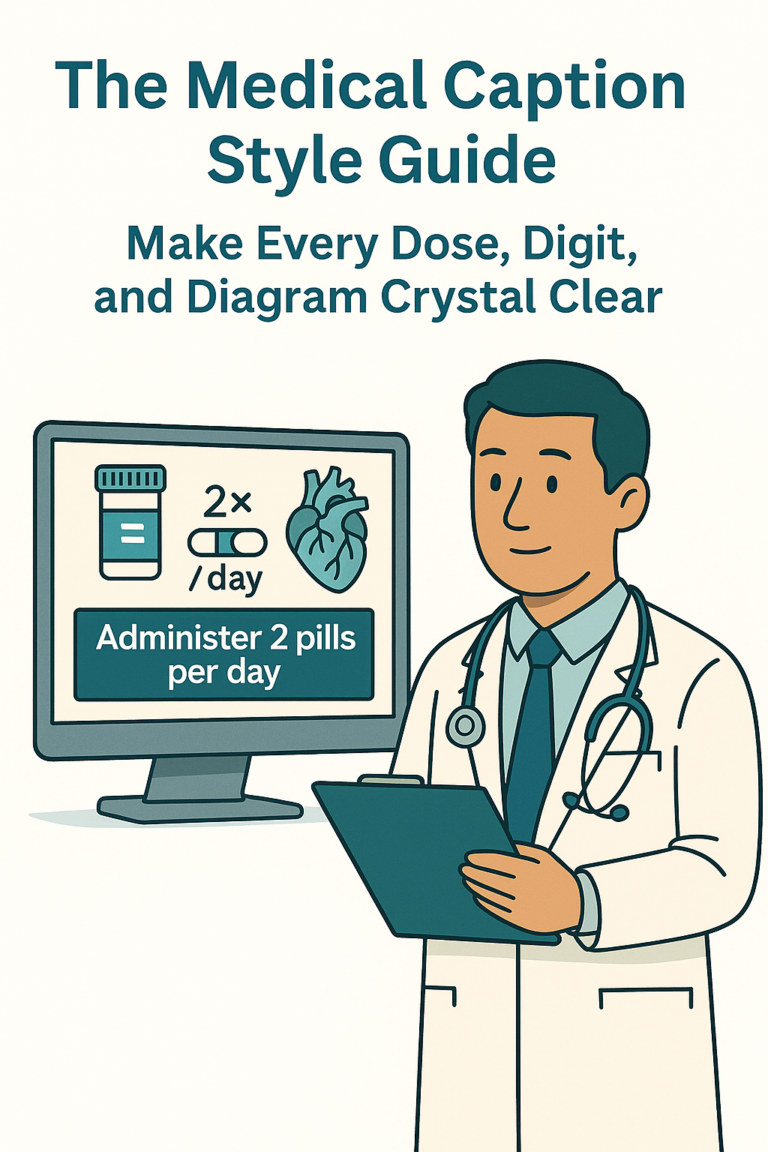If you’ve ever scrubbed through a 60‑minute grand rounds video to find one 20‑second pearl, you know the pain. A surgical resident told us she hunted for an elusive note on preventing bile duct injury—until she opened the transcript, searched “Calot’s triangle,” and landed on the exact timestamp. That’s the quiet superpower of accurate, time‑coded transcription: it doesn’t just make videos accessible; it transforms them into a living, searchable library.
MedXcribe is built for moments like this. Because it’s fine‑tuned on medical data, it recognizes terminology, abbreviations, and drug names most tools miss. In this post, we’ll show how turning your videos into transcripts and captions can dramatically improve learning, clinical workflows, and research—even before you press play.
Why Searchable Transcripts Matter
Faster learning, fewer rewatches: CME modules, board review lectures, and case conferences become skimmable when you can search within them. Time‑coded transcripts let you jump to exactly where “acute limb ischemia” or “CHA2DS2‑VASc” appears.
Knowledge continuity across teams: Rotations change, staff turn over, but a searchable video library means institutional knowledge sticks. New hires can catch up fast by scanning transcripts and jumping to key sections.
Better for multilingual and diverse teams: Captions and transcripts support clinicians and students whose first language isn’t English. With precise medical terms, comprehension improves without dumbing down content.
Research ready: Researchers can mine transcripts for topic frequency, build datasets of quotes, and find relevant clips for systematic reviews. The transcript becomes an index for the entire video archive.
How Time‑Coded Transcripts Unlock Value
1) Instant navigation and micro‑learning
– Time stamps enable “chaptering” without heavy editing. Learners can jump from “pathophysiology” to “differential” to “management.”
– Highlight and save moments. Many teams annotate transcripts with tags like “guideline update,” “dosage,” or “pitfall” for quick retrieval.
2) Consistent clinical terminology
– In medicine, misspelling one term can derail a search. Fine‑tuned models like MedXcribe preserve specialized vocabulary (e.g., empagliflozin vs. enoxaparin), reducing false positives and manual fixes.
– Accurate terms feed better metadata—titles, descriptions, and keywords—improving discoverability in your LMS, SharePoint, or knowledge base.
3) Accessibility that actually gets used
– Captions help viewers who are deaf or hard of hearing, but they also serve those watching in noisy wards or on silent commutes.
– Alt‑language subtitles and simplified transcripts can support patient education and resident onboarding.
4) Structured outputs for every workflow
– Export caption files (SRT/VTT) for platforms like YouTube, Vimeo, or your LMS.
– Export full transcripts (TXT/Docx) for printing, note‑taking, and quick review.
– Export machine‑readable formats (JSON) to tie transcripts into search engines, dashboards, or analytics.
Practical Blueprint: Build a Searchable Medical Video Library
1) Standardize inputs
– File naming: Include department, topic, speaker, date, and version (e.g., Cardiology_AFib_Roundtable_DrLee_2025‑01‑18_v1.mp4).
– Audio quality: Use lapel mics and minimize background noise. Crisp audio = higher accuracy.
– Speaker cues: If possible, introduce speakers by name to help with speaker labels.
2) Transcribe with medical accuracy
– Use a medical‑tuned engine like MedXcribe for terminology fidelity. Configure specialty glossaries (e.g., neurology, oncology) to reduce ambiguous terms.
– Auto‑segment into readable lines: 1–2 sentences per caption, 32–40 characters per line for easier reading.
– Review critical terms: Spot‑check drug names, dosages, and acronyms. Create a shared “approved term” list for consistency across videos.
3) Enrich metadata
– Add a short summary up top (3–4 sentences) capturing the big picture.
– Tag key concepts (e.g., “ACS,” “STEMI,” “dual antiplatelet therapy”).
– Mark learning objectives and key timestamps (e.g., “00:12:30: When to escalate vasopressors”).
4) Publish with purpose
– Upload captions with the video for accessibility.
– Host transcripts beside the video—ideally with a transcript search box.
– Provide quick‑link timestamps for key chapters in the description.
5) Govern, protect, and update
– Follow your organization’s privacy and security policies for recordings. Limit access to clinical videos that include PHI.
– Version control: If guidelines change, update the transcript summary with a date‑stamped note.
– Analytics: Track which transcript terms are searched most—use that insight to plan future content.
Small Team? Start Here in One Afternoon
– Pick one high‑value video (e.g., your most‑watched lecture or a recurring teaching session).
– Run it through MedXcribe, generate captions and a full transcript.
– Add a 150‑word summary and 5–8 tags.
– Publish in your LMS or internal portal with a transcript panel and a simple “Jump to” list of timestamps.
– Gather feedback: Was it easier to find? Which terms did people search? Apply what you learn to the next video.
A Quick Story from the Ward
During a busy winter rotation, a hospitalist team needed to confirm dosing nuances for heparin in obese patients. Instead of paging pharmacy, the chief resident searched the transcript of a recent anticoagulation update: “heparin dosing obesity.” In seconds, they landed on a precise clip with dosing tables and caveats. Patient care moved forward faster—and the teaching moment stuck.
The Takeaway
Captions are more than compliance. When they’re accurate, time‑coded, and paired with sensible metadata, your medical videos become a searchable, institutional memory—useful to clinicians on rounds, students cramming for boards, researchers hunting for signals, and patients learning about their conditions.
If you’re ready to turn your video library into a knowledge engine, try transcribing your next lecture, case review, or patient education video with MedXcribe. You’ll spend less time scrubbing and more time learning, teaching, and treating.

